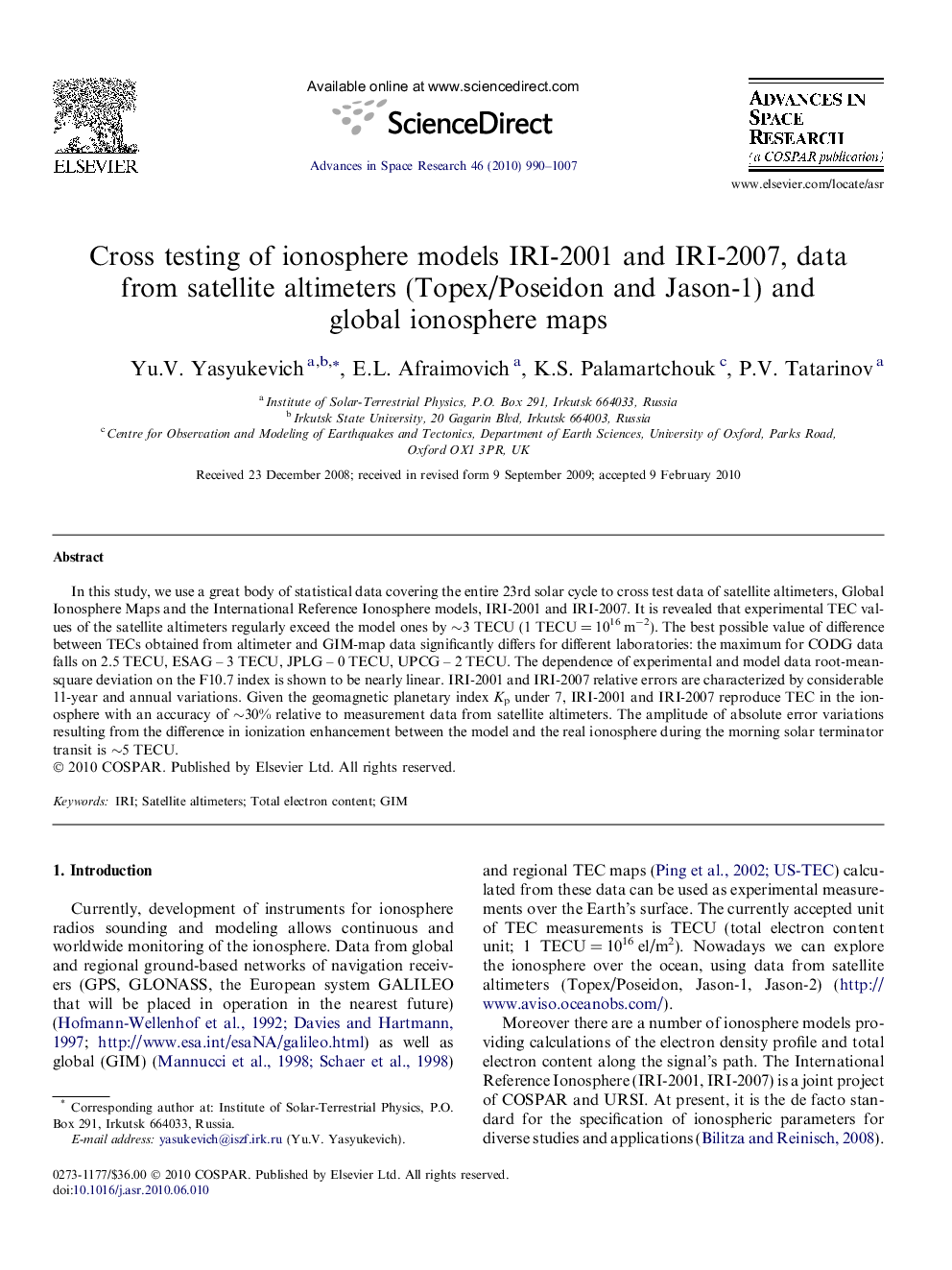| Article ID | Journal | Published Year | Pages | File Type |
|---|---|---|---|---|
| 1765504 | Advances in Space Research | 2010 | 18 Pages |
Abstract
In this study, we use a great body of statistical data covering the entire 23rd solar cycle to cross test data of satellite altimeters, Global Ionosphere Maps and the International Reference Ionosphere models, IRI-2001 and IRI-2007. It is revealed that experimental TEC values of the satellite altimeters regularly exceed the model ones by â¼3 TECU (1 TECUÂ =Â 1016Â mâ2). The best possible value of difference between TECs obtained from altimeter and GIM-map data significantly differs for different laboratories: the maximum for CODG data falls on 2.5 TECU, ESAG - 3 TECU, JPLG - 0 TECU, UPCG - 2 TECU. The dependence of experimental and model data root-mean-square deviation on the F10.7 index is shown to be nearly linear. IRI-2001 and IRI-2007 relative errors are characterized by considerable 11-year and annual variations. Given the geomagnetic planetary index Kp under 7, IRI-2001 and IRI-2007 reproduce TEC in the ionosphere with an accuracy of â¼30% relative to measurement data from satellite altimeters. The amplitude of absolute error variations resulting from the difference in ionization enhancement between the model and the real ionosphere during the morning solar terminator transit is â¼5 TECU.
Keywords
Related Topics
Physical Sciences and Engineering
Earth and Planetary Sciences
Space and Planetary Science
Authors
Yu.V. Yasyukevich, E.L. Afraimovich, K.S. Palamartchouk, P.V. Tatarinov,
